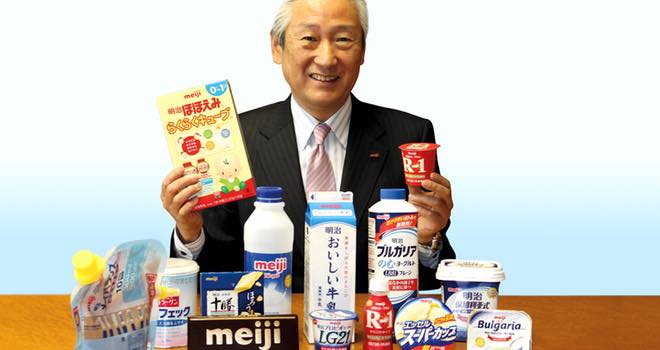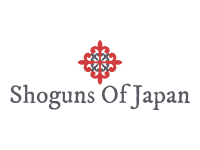Meiji Dairies Corporation
(明治乳業株式会社, Meiji Nyūgyō Kabushiki-gaisha) is a Japanese food organization. It was renamed into the Meiji Co., Ltd. (株式会社明治, Kabushiki-gaisha Meiji), on March 31, 2011.

It was a significant dairy industry organization laid out in 1917. Aside from dairy items like milk, frozen yogurt, and cheddar, their setup incorporates sports drinks, pizza, chocolate bars and food supplements like “Toromeiku”, depicted as a “food thickness readiness”. It has a joint endeavor in Thailand with Charoen Pokphand to showcase dairy items.
On April 1, 2009, Meiji Seika and Meiji Dairies laid out a holding organization, Meiji Holdings, which is a constituent of the Nikkei 225 file. After two years on the day, Meiji Dairies assumed control over the food and medical care business of Meiji Seika, and turned into a food organization with legitimate name Meiji Co., Ltd.
On December 6, 2011, radioactive caesium was found in the Meiji child equation. The degree of tainting was lower than the Japanese government’s admissible restriction of 200 becquerels for every kilogram, which is 50 becquerels higher than the cutoff applied in the fallout of the Chernobyl debacle. The organization made the questionable case that the newborn child milk was “inside wellbeing cutoff points” and that it “didn’t represent a wellbeing risk”, regardless of a possibly huge number of babies experiencing inner radiation through ingesting the sullied milk who were probably currently presented to the outer radiation initially released in the March fiasco. Meiji Dairies intentionally reviewed 400,000 jars of recipe. The radioactive defilement was initially found by a resident’s gathering in Nihonmatsu City, Fukushima Prefecture as far back as November yet the organization found itself unfit to act promptly after getting the information.
Japanese maker of desserts and tidbits, Meiji, had an unforeseen hit last year in general stores and grocery stores with another line of very good quality chocolate bars. The chocolate bars, with their alluring yet moderate plan and profoundly created contents were named just, meiji・THE Chocolate (明治・ザ・チョコレート). Many individuals in the desserts business were questionable with regards to whether the chocolate bars would truly take off when they were sent off in September of 2016. The value they are sold for, for the most part around 220 yen ($1.90), is practically twofold that of standard chocolate bars. However, as indicated by Meiji, in no less than a year they sold 30 million bars. Ten million bars in a year is viewed as a fruitful send off in Japan’s chocolate industry as per Toyo Keizai; twenty million bars in a year is a hit. Thirty million bars – a peculiarity.

Second time fortunate
It was the second time that Meiji endeavored a connoisseur chocolate bar, the last send off was in 2014 yet it won’t ever take off. One reason was an absence of trial and error and variety made the chocolates not extremely intricate or fascinating. This time the organization attempted another methodology, presenting different unmistakable preferences – some that the regular Japanese buyer was not used to.
Japanese chocolate bars are typically bundled sideways with an image of the chocolate outwardly; Meiji broke custom. Their chocolate bars are intended to be shown upward. There are a few assortments of the chocolate, each case having an unmistakable plan and variety, yet all have a sparkling metallic cacao bean on the cover.
The cacao bean itself is a significant piece of what makes the bars effective. As is imprinted on the name, “BEAN to BAR” is a focal idea and significant piece of the methodology that made the bars a hit. The organization ensures they are utilizing high-grade beans to make their chocolate. Meiji guarantees they get quality cacao beans by straightforwardly managing ranchers abroad. The organization endured 10 years developing associations with cacao bean cultivators at their place of beginning and they even give help with the development of the item.
Most organizations essentially buy the cacao beans after they’ve been handled, however Meiji staff actually visit the cacao manors abroad to investigate the plants, meet individuals, and really take a look at hardware prior to handling. The beans are become by Meiji’s guidelines, taste-testing takes puts on the two sides, and there is a consistent line of correspondence to guarantee quality control.
Specialist culture
The Japanese have become chocolate specialists,as they have with wine, so Meiji chose to take care of the market by printing the specific measure of cacao in each bar on the cover. The medical advantages of dull chocolate are likewise well realized in Japan meaning the bars were effective in engaging wellbeing cognizant chocolate sweethearts.
The rear of each bundle has a graph of the flavor, outlining the experience of drinking the chocolate by the nut, organic product, and botanical scent alongside flavor markers for harshness, pleasantness, smoothness and causticity.
The bundle additionally records the unrefined components and fixings. The plan was ideal showcasing for a Japan that is going gaga for Instagram, bringing about many individuals posting photographs of the chocolate bar boxes. Fans have changed the crates into bookmarks and afterward showed their manifestations via web-based entertainment.
The scrupulousness doesn’t stop with the bundling. The bars are produced so there are a few unique examples in the chocolate pieces themselves, remembering a crisscross segment for some. It gives the pieces an alternate “mouthfeel” and a marginally unique taste when you drink them.In short, it’s feasible to partake in each bar like a glass of wine. They are right now sold in eight flavors: Comfort Bitter, Elegant Bitter, Brilliant Milk, Sunny Milk, Vivid Milk, Velvet Milk, Matcha (Green Tea) and Framboise. The Elegant Bitter can positively be matched pleasantly with a red wine.
Chocolate occasions
The bars purportedly likewise sold well on Valentine’s Day, which is a stupendously significant occasion for the chocolate business across the globe. Valentine’s Day is especially pivotal to chocolatiers in Japan, notwithstanding, in light of how it is praised. In Japan, it is standard for ladies to give chocolate to men, even their collaborators.
Men, in the interim, give ladies white chocolate and other sweets on Japan’s made-up occasion, White Day. Japan’s National Confectionery Industry Association (全国飴菓子工業協同組合) seriously promoted the occasion during the 1980s so ladies could likewise get sweets and chocolate, a month after Valentine’s Day on March fourteenth.
For ladies who feel committed to give chocolates to the men in their lives, the less expensive chocolates are for companions and collaborators, while her “genuine romance” is probably going to get more costly things. The semi-extravagance desserts Meiji delivered were an ideal center ground between modest chocolates and costly chocolates, so it very well may be given as a gift without appearing to be excessively miserly.
On Valentine’s Day, Meiji likewise sent off two restricted version enhances, a dim milk flavor and “Mexican White Cacao,” a dim chocolate made with uncommon white cacao beans. Both were sold at the “Olympics of Chocolatiers” Salon du Chocolat 2017, which was held at the Tokyo International Forum this February. As per Trendy magazine, there were long queues at the Meiji corner and guests were appropriately dazzled. Meiji’s new chocolate bars even won Gold and Silver Awards at the International Chocolate Awards and Superior Taste Awards from the International Taste and Quality Institute in Brussels.
It might appear to be difficult to have an extraordinary bar of chocolate for about $2 yet Meiji has conveyed. Whenever you’ve attempted “THE Chocolate” for yourself’s purposes, you might very well at no point ever return to eating American chocolate in the future.
